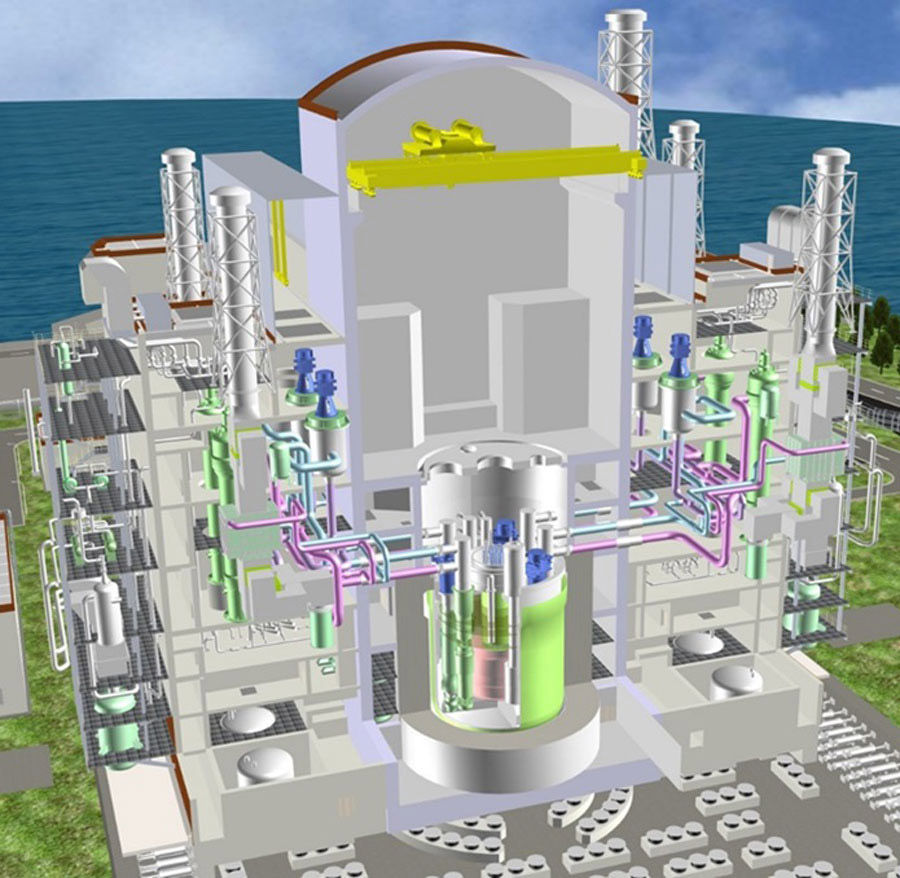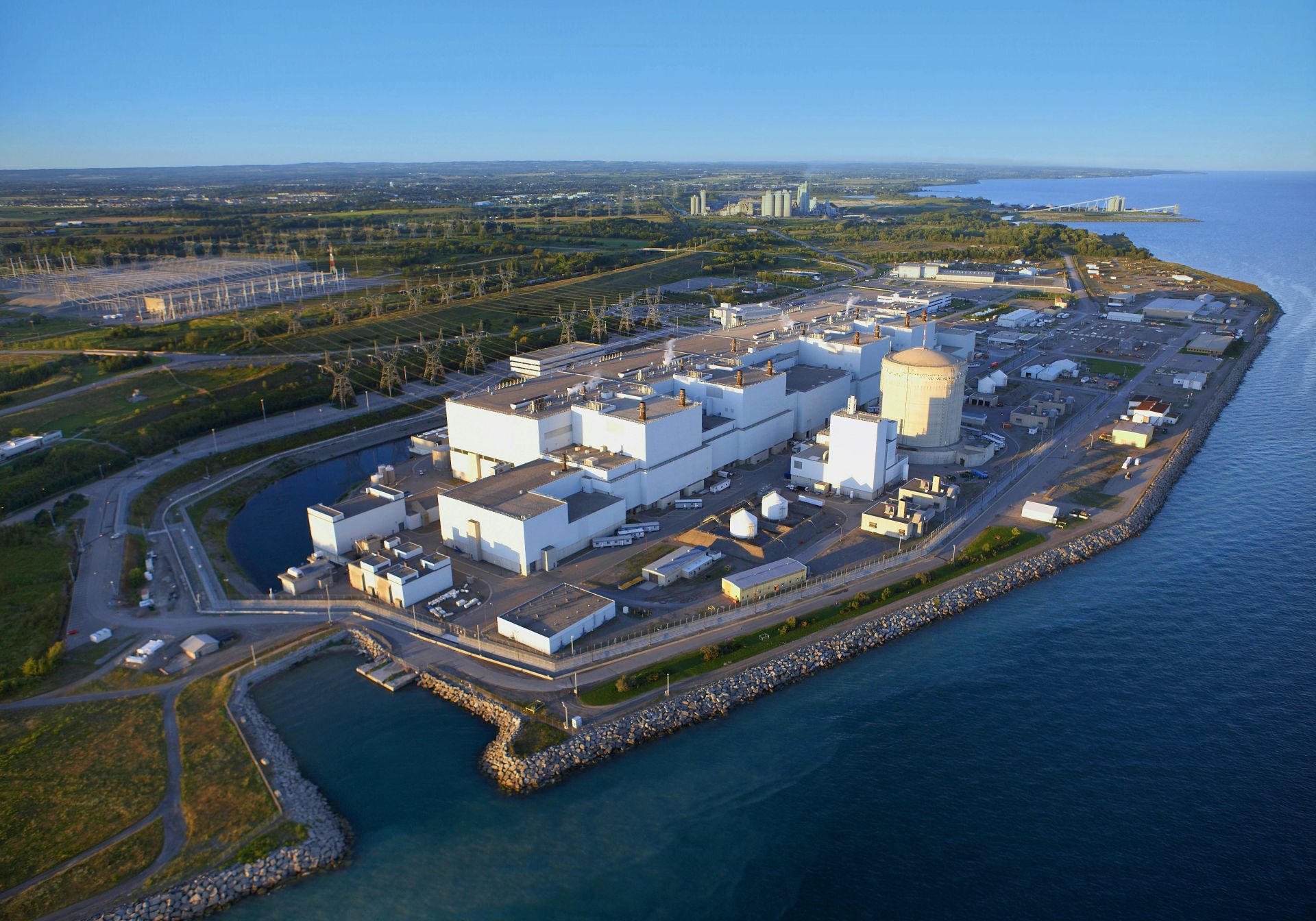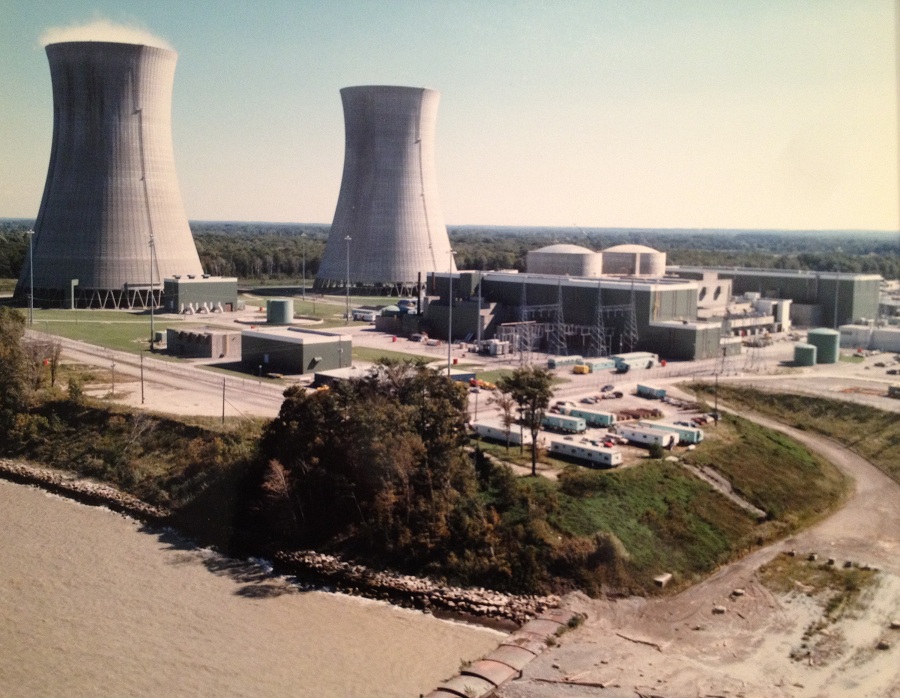Eddie Saab, Westinghouse Canada president, speaks at the Canadian Supplier Symposium. (Photo: Westinghouse)
Westinghouse Electric Company welcomed 95 vendors to the Canadian Supplier Symposium last week to engage with current and potential suppliers for the company’s global new-build projects.
Upgrades to the particle accelerator enabling the record 1.7-MW beam operating power at the ORNL’s SNS included adding 28 high-power radio-frequency klystrons (red tubes) to provide higher power for the accelerator. (Photo: Genevieve Martin/ORNL)
The Spallation Neutron Source (SNS) at the Department of Energy's Oak Ridge National Laboratory set a world record when its particle accelerator beam operating power reached 1.7 MW, an improvement on the facility’s original design capability of 1.4 MW, ORNL announced on July 21. That higher power provides more neutrons for researchers who use the Office of Science user facility for materials science investigations.
Vogtle’s Unit 4 reactor in June. (Photo: Georgia Power)
Southern Nuclear, operator of Georgia’s Vogtle plant, has informed the Nuclear Regulatory Commission that all 364 inspections, tests, and analyses for Unit 4 have been performed, and all acceptance criteria for the new reactor have been met. Primary plant owner Georgia Power made the announcement last Friday.
The National Reactor Testing Station (Photo: DOE)
Gas-cooled reactors have roots that reach way back to the development of early experimental reactors in the United States and Europe. In the United States, early experimental reactors at Oak Ridge and Brookhaven National Laboratories were air-cooled, as were early production reactors known as the “Windscale Piles” in the United Kingdom. Dragon, also located in the United Kingdon and operational from 1965 to 1976, used helium as the coolant and graphite as the moderator.
The Darlington nuclear power plant. (Photo: OPG)
Ontario Power Generation has achieved another milestone in its massive Darlington nuclear plant refurbishment project, and in rather impressive fashion: The Unit 3 CANDU reactor has been reconnected to Ontario’s electricity grid 169 days ahead of schedule, according to a July 18 OPG media release.
The Perry nuclear power plant. (Photo: ANS)
Energy Harbor has filed its initial license renewal application for the Perry nuclear power plant, requesting an additional 20 years of operation for the facility, the Nuclear Regulatory Commission announced yesterday. Dated July 3, the 2,427-page application is now available on the agency’s website.
A view of the Low-Activity Waste Facility at the Hanford Site. (Photo: DOE)
The National Academies of Sciences, Engineering and Medicine (NASEM) recently held a public meeting to discuss its third and final report centered on the Department of Energy’s Office of Environmental Management’s tank waste cleanup mission at the Hanford Site in Washington state.
Seaborg cofounder Eirik Eide Pettersen (left) and Norsk Kjernekraft CEO Jonny Hesthammer at a letter-of-intent signing ceremony. (Photo: Seaborg)
Denmark’s Seaborg Technologies and Norsk Kjernekraft (aka Norwegian Nuclear Power) have signed a letter of intent to investigate the possibility of deploying Seaborg’s 100-MWe compact molten salt reactor (CMSR) in Norway.
ORNL has developed an automated metrology system to produce Pu-238 pellets. (Photo: ORNL)
The Department of Energy recently shipped half a kilogram of plutonium oxide pellets from Oak Ridge National Laboratory to Los Alamos National Laboratory, the agency announced July 18, marking the largest such shipment since the DOE restarted domestic plutonium-238 production over a decade ago.
Savannah River National Laboratory employee Vernon Bush, center, and SRNL summer intern Jadrion Huell, standing at right, of Claflin University, conduct a job shadowing activity with students Tredarius Lassiter, seated at left, and Tommy Applewhite. (Photo: DOE)
A three-day Minority Serving Institutions Partnership Program (MSIPP) event, led by Savannah River National Laboratory researcher Simona Hunyadi Murph, was held recently at the South Carolina site, according to a release by the Department of Energy’s Office of Environmental Management (DOE-EM). The event included a collaborative workshop, job shadowing, and a tour of the laboratory and Savannah River Site field activities.
NNSA administrator Jill Hruby surveys the Administrative Boundary Line at South Ossetia. Russia occupies Georgian territory on the other side of the line. (Photo: NNSA)
National Nuclear Security Administration administrator Jill Hruby and deputy administrator for defense nuclear nonproliferation Corey Hinderstein visited the country of Georgia in southeastern Europe last month to discuss the NNSA’s bilateral partnerships, seek areas of cooperation, and get a closer look at how nuclear security is implemented at active border crossings in the region.
View of the machine controls electronics of Centrus’s HALEU demonstration cascade. (Photo: Centrus)
TerraPower and Centrus Energy Corp. announced on July 17 that they have signed a memorandum of understanding to “significantly expand their collaboration aimed at establishing commercial-scale, domestic production capabilities for high-assay, low-enriched uranium (HALEU)” to supply fuel for TerraPower’s first Natrium reactor. Nearly three years ago, TerraPower first announced plans to work with Centrus to establish commercial-scale HALEU production facilities. The two companies signed a contract in 2021 for services to help expedite the commercialization of enrichment technology at Centrus’s Piketon, Ohio, facility.






 2x1.jpg)









